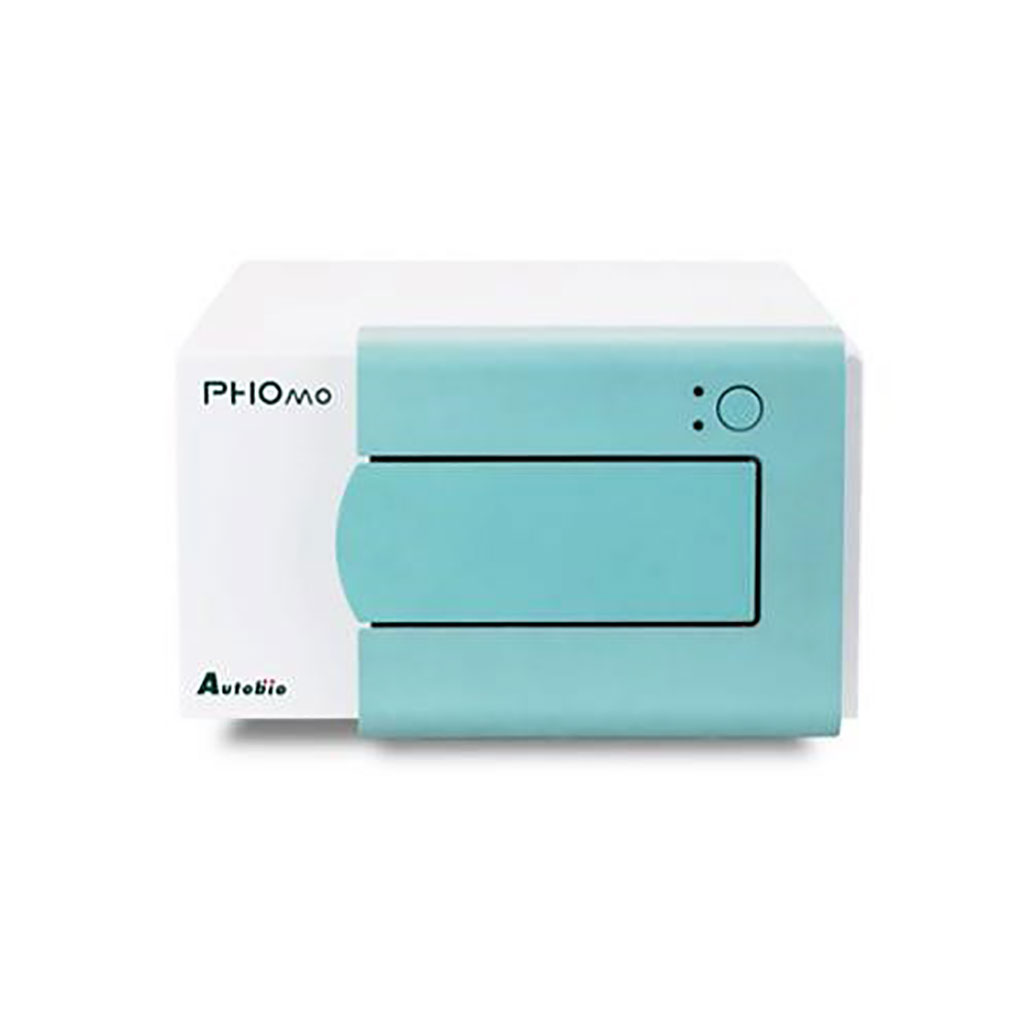Urea Dissociation Tests Reduces SARS-CoV-2 IgM False-Positives
By LabMedica International staff writers
Posted on 28 Apr 2020
At present, the diagnosis of COVID-19 is mainly based on epidemiological history inquiry, laboratory testing, and chest radiology examination. Among these examinations, the detection of nucleic acid from SARS-CoV-2 is the direct evidence for COVID-19 diagnosis.Posted on 28 Apr 2020
The detection of serum-specific IgM and IgG, especially the former, is routinely used in clinical laboratories to evaluate the acute phase infection of pathogens in the serum. In many infections, IgM can be detected as early as one week after infection. When the level of IgM reaches the detection limit of the assay kit, the detection of IgM can avoid false-negative results owing to sampling.

Image: The PHOMO Microplate Reader: the sophisticated optical design combined with the accurate plate transport system allows for high resolution scanning (29 points per well) to support agglutination assays (Photo courtesy of Autobio Diagnostics Co).
Medical Laboratory Scientists at the Affiliated Hospital of North Sichuan Medical College (Nanchong, P.R. China) used gold immunochromatography assay (GICA) and enzyme-linked immunosorbent assay (ELISA) to detect SARS-CoV-2 IgM in 86 serum samples, including five influenza A virus (Flu A) IgM-positive sera, five influenza B virus (Flu B) IgM-positive sera, five Mycoplasma pneumoniae IgM-positive sera, five Legionella pneumophila IgM-positive sera, six sera of HIV infection patients, 36 rheumatoid factor IgM (RF-IgM)-positive sera, five sera from hypertensive patients, five sera from diabetes mellitus patients, and 14 sera from novel coronavirus infection disease (COVID-19) patients.
The interference factors causing false-positive reactivity in the two methods were analyzed, and the urea dissociation test was employed to dissociate the SARS-CoV-2 IgM-positive serum using the best dissociation concentration. The IgM against Flu A and B, M. pneumoniae, and L. pneumophila were detected by indirect immunofluorescence assay (Respiratory tract 8 joint detection kit, EUROIMMUN, Inc., Lübeck, Germany). Rheumatoid Factor (RF-IgM) was detected by rate nephelometry assay (IMMAGE800, Beckman Coulter, Inc., Brea, CA, USA). HIV combi PT was detected by electrochemiluminescence assay (Cobas E602, Roche, Mannheim, Germany).
GICA and ELISA were used for SARS-CoV-2 IgM detection (kit provided by Beijing Hotgen Biotechnology Co., Beijing, China). Optical density in ELISA plates was measured using a PHOMO Microplate Reader (Autobio Diagnostics Co., Zhengzhou, China). Urea dissociation tests of GICA and ELISA were also performed.
The team reported that both GICA and ELISA detected positive SARS-CoV-2 IgM in 22 middle-high level RF-IgM-positive sera and in all the 14 sera from the patients with COVID-19 patients. The other 50 sera were negative. When urea dissociation concentration was 6 mol/L, SARS-CoV-2 IgM was positive in one middle-high level RF-IgM-positive sera and in the 14 COVID-19 samples detected using GICA. When urea dissociation concentration was 4 mol/L and the avidity index (AI) lower than 0.371 was set to negative, test results were positive for SARS-CoV-2 in 3 middle-high level RF-IgM-positive sera, as well as the 14 COVID-19 sera detected using ELISA.
The authors concluded that middle-high level of RF-IgM could lead to false-positive reactivity of SARS-CoV-2 IgM detected using GICA and ELISA, and urea dissociation tests would be helpful in reducing false-positive results of SARS-CoV-2 IgM. The study was published on April 10, 2020 in the Journal of Clinical Microbiology.









 assay.jpg)



